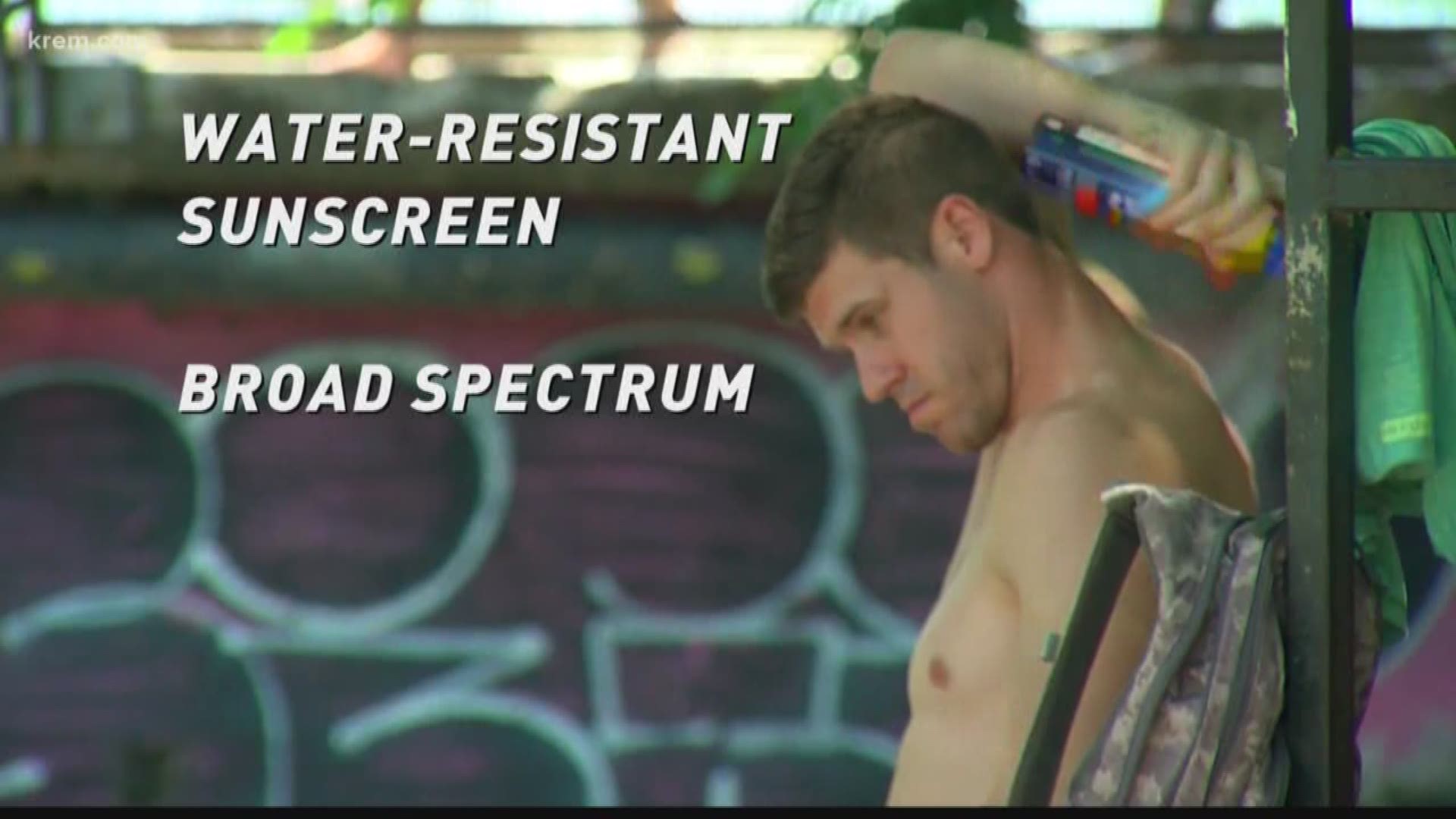Sticks, sprays, gels, lotions, there are more sunscreen choices than ever to suit your preference.
Doctors from the American Academy of Dermatology said the best one is the one you wear correctly because a false sense of protection puts you at a greater risk for sunburn and skin cancer.
Are your feet reminding you of the sandals you wore last weekend? If you are getting tan lines or burnt, you are probably not protecting those body parts from the sun.
Dermatologists said these simple ground rules will save you from significant pain.
Choose water resistant sunscreen with broad-spectrum coverage and have an SPF of 30 or higher. Broad spectrum means the sunscreen will protect against both UVA and UVB rays, the harmful ultraviolet light that can cause skin cancer, not just against the rays that cause sunburn.
A golf ball size amount of liquid sunscreen is enough for the entire body while a nickel size dollop is what you should be using on your face. The benefit of an SPF greater than 30 is incrementally small. Doctors said most people apply sunscreen too light so every bit helps.
Spray lotions and sticks are a great option to quickly cover large body areas like your back, arms and legs. However, you need to put a little bit of effort into them so that they are effective.
Do not apply the spray the same way you put on body spray or perfume. Hold the can or nozzle an inch or two from your body and spray until your skin glistens. If you do not see the lotion on your skin, then it is not there. You may want to avoid using a spray sunscreen on a windy day. It makes it difficult to apply and easier to accidentally inhale.
Doctors said sticks are great for the face, under the eyes and back of hands. Doctors said to apply four passes back and forth to get the best protection. Rub both the spray and stick in afterwards to make sure you did not miss any spots and that the coverage is even.
No matter what type of sunscreen you use, make sure you reapply it every two hours when outdoors or immediately after swimming or sweating. The sun can break down the chemicals protecting you.
What is left from last years may do the job this year. Sunscreens are designed to remain effective for three years, but it does expire. Do not use it if the date has past. Toss it If it does not have a date and you cannot remember when you bought it. Do not take a chance that it will still prevent sun damage.
If you have sensitive skin, it is OK to Baby it. Sunscreens made for kids are also 100 percent effective for adults.
Since no sunscreen blocks 100 percent of the sun's harmful ultraviolet rays. Doctors said to be smart and wear protective clothing whenever possible, including a lightweight long-sleeved shirt, pants, a wide-brimmed hat and sunglasses with UV protection and sit in the shade when ever you can.
Doctors recommend to talk to your health care provider or board certified dermatologist If you still have questions about which type of sunscreen is best for you and your family.

